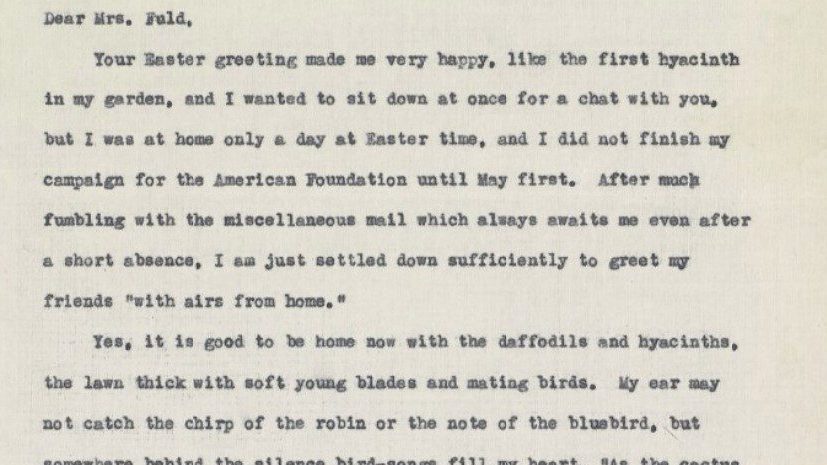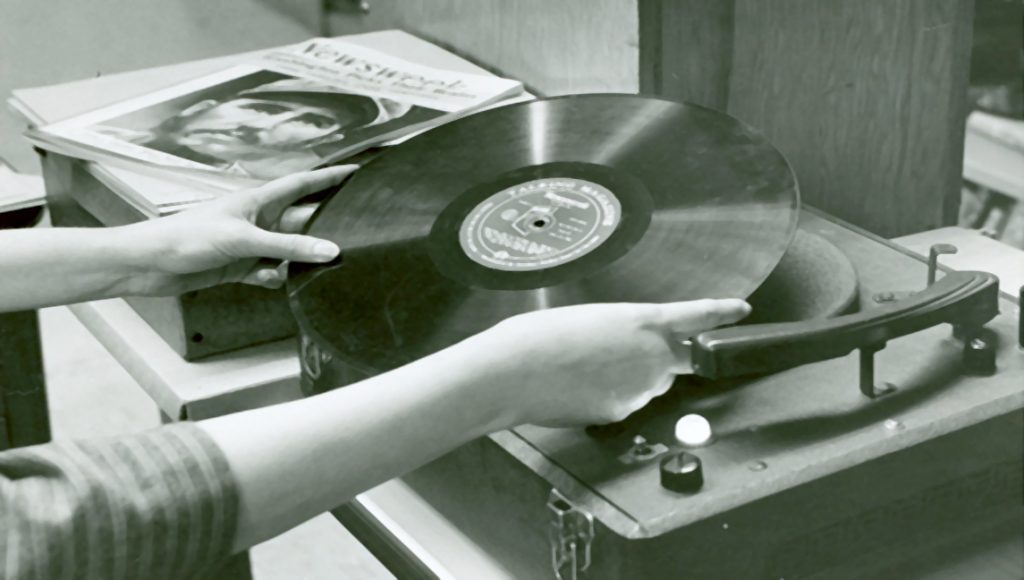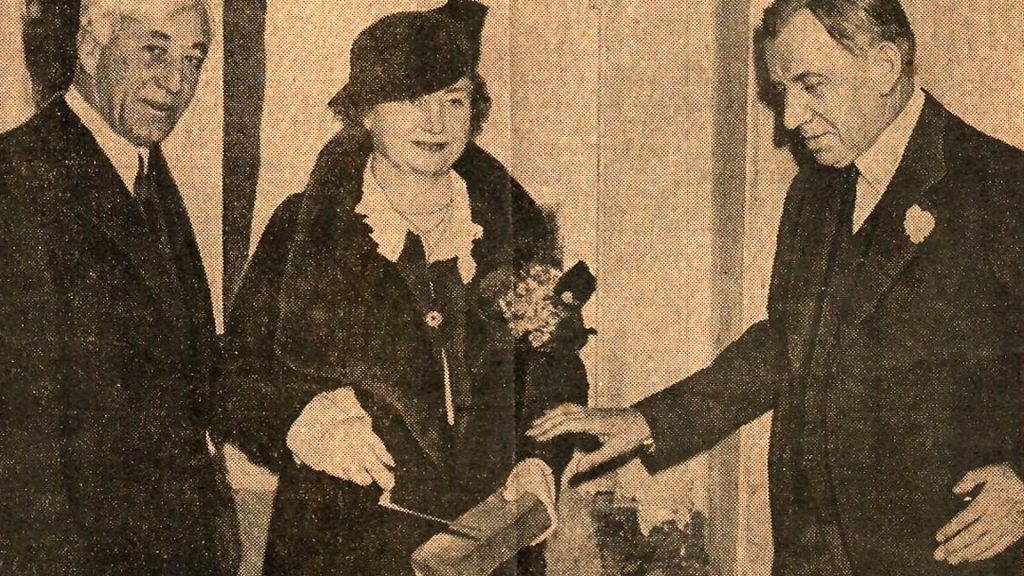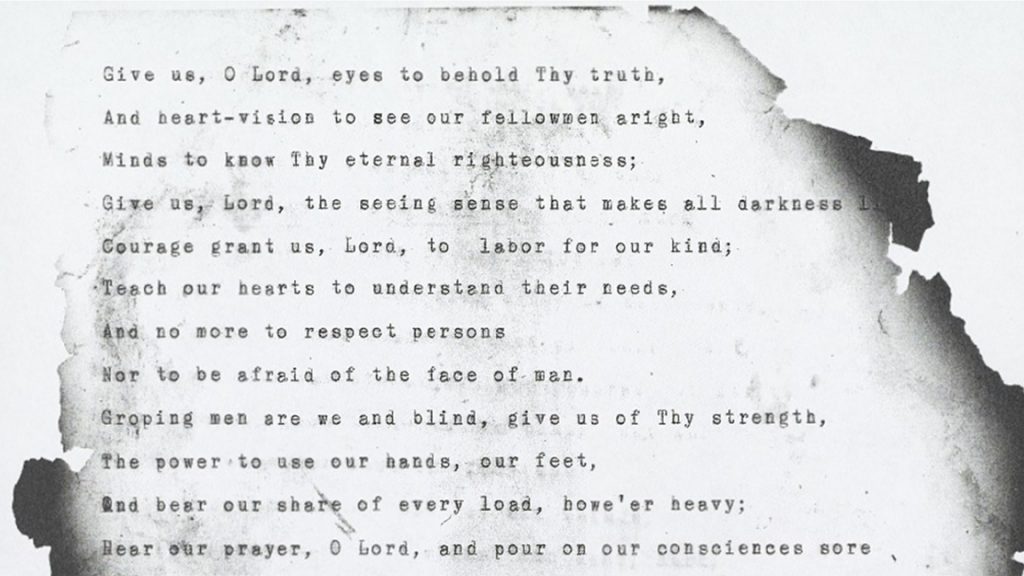Of Beautiful Springtimes and Unfortunate Transcriptions

Yes, it is good to be home now with the daffodils and hyacinths, the lawn thick with soft young blades and mating birds. My ear may not catch the chirp of the robin or the note of the bluebird, but somewhere behind the silence bird-songs fill my heart, ‘As the cactus fills the night with beauty and with fragrance!’ I am thankful that In a troubled world no calamity can prevent the return of spring.
Helen Keller, 1933
So begins Helen Keller’s reply to an Easter greeting from philanthropist Carrie B.F. Fuld. She describes her travels through the South, the health of her companions, and even laments the start of the persecution of people who were Jewish in Germany. Unfortunately, if a reader is using the transcription to access the letter rather than the photograph, the message is not as clear. “Uo**ww and tfee woadftfftO” it reads. “a^snea of fal» faacli. and faaclniitiaa.”
People who are blind or low vision often rely on screen readers to decipher electronic text and make it readable through speech or braille. The program responsible for generating automated text is called optical character recognition (OCR). Software reads a page image and translates it into a text file by recognizing the shapes of the letters. OCR software breaks the image down into recognized letters, numbers, and punctuation marks. Letters become words, words become paragraphs, and in the end, the printed page has been translated into machine-readable text that you can read, edit, save, and have voiced by a screen reader or other device.
OCR is not perfect, but it is typically the best solution for transcribing enormous amounts of information – be it at the Helen Keller Archive or the M.C. Migel Library’s Internet Archive collection. Items that are handwritten, damaged, illustrated, or contain special fonts are sometimes unreadable. But in this case, even a well-preserved, typewritten document has clearly presented some issues in OCR transcription. In the case of the Helen Keller Archive, corrected transcriptions can be submitted by hand.
Some organizations recruit volunteers to review entire collections of transcribed materials. But with something as large and automated as Internet Archive, corrections are not possible. So while a book such as Keller’s “The Story of My Life” may be transcribed rather well by OCR, a reader will still run into problems such as the transcription of a letter from Helen Keller to Phillips Brooks, which begins “JO-lGoitOTl-, WLnAU’TL lit. a tjoil a. Lo-VLTLa Q|tl .”
Justin Gardner is the AFB Helen Keller Archivist at APH.
Share this article.
Related articles

Technological Relevance in an Ever-changing World
Everything old is new again. Or so the adage goes. But there is an underlying truth to it, even if...

The Storied Life of a Time Capsule
Time capsules have long been an intriguing way for people to communicate through the ages, be they historians or grade...

Hidden Legacies of Helen Keller
Burned manuscript recovered from the wreckage of Arcan Ridge, 1946. Photo AFB Helen Keller Archive As we get ready...
